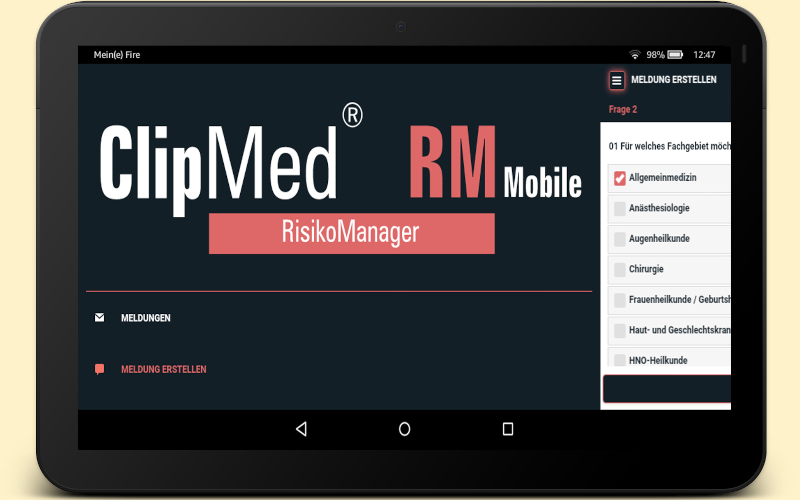The Act to Improve Patients’ Rights obliges hospitals to introduce risk management and error reporting systems. The minimum requirements for risk management and error reporting systems laid down by the Federal Joint Committee (G‑BA), which are binding for all hospitals, apply. Accordingly, the documentation, analysis, assessment, management and monitoring of risks must be ensured. In addition, employees must be trained accordingly. Dealing professionally with risks presupposes a practiced risk avoidance culture and requires all hospital employees to deal constructively with this issue.
The Institute for Workflow Management in Health Care (IWiG), under the direction of Prof. Dr. rer. oec. Dipl. Soz.-Päd. Michael Greiling, offers in cooperation with the European University of Applied Sciences — University of Applied Sciences for Health, Social and Pedagogical Sciences the software-based academic further education with university certificate to become a “Certified Risk Manager in Health Care”.
The course is aimed at employees from the commercial, medical and nursing sectors who wish to develop their skills in the field of risk management. As trained experts, participants assume responsibility for the targeted and resource-conserving management of risk-related processes in their clinics, develop problem-solving strategies and support optimization processes.
The in-service training conveys a well-founded, scientifically evaluated and field-tested concept for action in order to systematically manage risks as a result of organizational deficits and processes in need of optimization. Participants learn the targeted planning, coordination, execution and control of risk prevention measures with the help of the multiple award-winning software solution ClipMed RM Mobil — Der RisikoManager.
The web application supports the structured recording, analysis and evaluation of risk reports through an automated workflow. With the help of mobile devices, risks, their consequences and frequency can be assessed and reported back. In this way, disruptions are avoided in the future in the best possible way and the confidence of patients, relatives, employees and the public in the safety of services is strengthened.

















